Subtle Hairline Correction with 3000 Hairs!
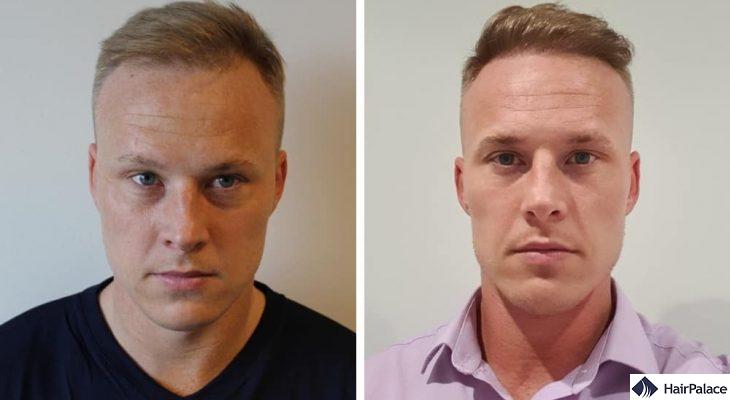
- Average male hairline
- The first week
- 2nd and 3rd week
- The 2nd and 3rd post-op month
- 4-6 months after the surgery
- A year after the surgery
When Stuart contacted us in February 2017, he already had experience with hair restoration procedures.
He had a FUT surgery 4 years before when he got 3000 hairs implanted to the frontal area.
His goal with the second surgery was to fill up the triangles at the temples and to minimally correct his hairline.
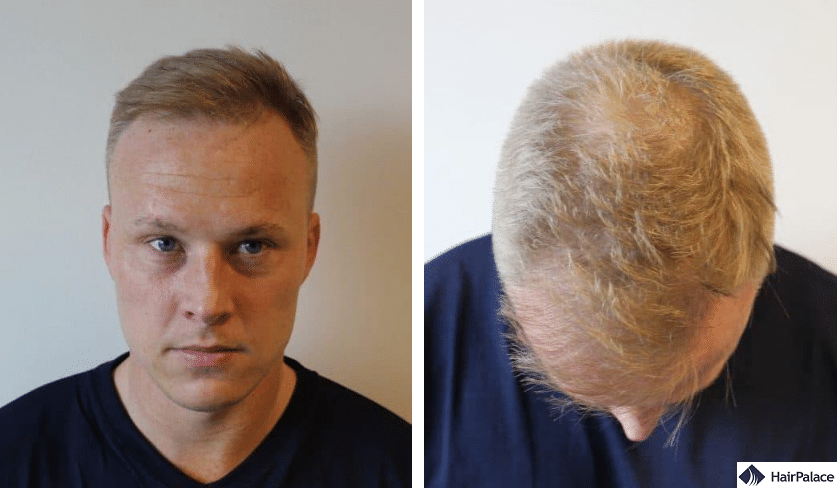
At the consultation on the 15th of February, our doctors found that 3000 hairs would be sufficient to achieve his goal.
As Stuart was happy with the details discussed during the appointment, he reserved his surgery the next day.
Average male hairline
The average male hairline typically forms a gentle, symmetrical “M” shape across the forehead.
The centre (or mid-frontal point) sits slightly lower, while the temples curve subtly backwards.
In youth, this hairline is usually even and well-defined, sitting about 5–7 cm above the eyebrows, depending on facial proportions.
As men age, minor recession at the temples is normal and part of the mature hairline, a natural evolution that usually stabilises.
However, when the hairline starts receding deeper into the temples, creating a more pronounced “M” or “V” shape, it can indicate the onset of a receding hairline.
This often marks the early stages of male pattern baldness (Norwood stage 2 and beyond).
The key distinction lies in how much the hairline shifts and whether the changes continue progressively.
In Stuart’s case, you can see a well-defined V-shaped hiarline, along with some thinning in the vertex area.
He wanted to lower his hairline back to normal levels, which we happily complied with.
Receding hairline treatment male: Stuart’s evolution
While several medical treatments exist for male hair loss, none offer a permanent solution.
Treatments such as minoxidil and finasteride may slow down hair loss or promote regrowth, but their effects typically stop once treatment ends.
Hair transplantation, on the other hand, is the only method that can permanently restore lost hair and help rebuild confidence.
We carried out Stuart’s hair transplant surgery on the 3rd of May 2017.
In the 6-7 hour long procedure 3242 hairs were transplanted with the FUE2 SAFE System technique:
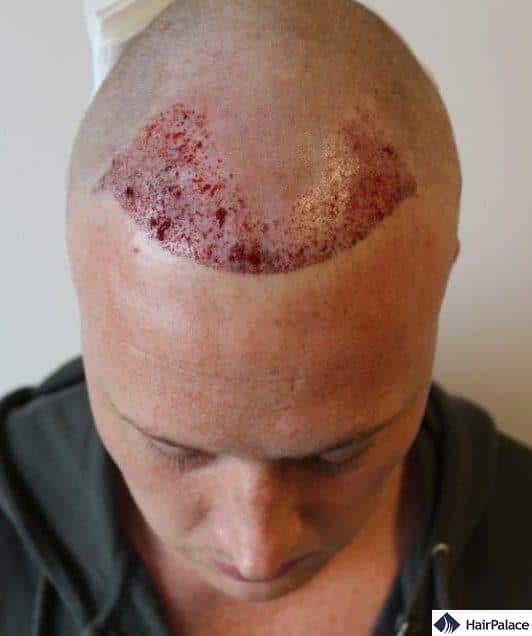
1st week
During the 1st post-op week, the implanted area cannot be touched or washed. A sterile saline spray must be used to keep the scalp clean.
Sometimes the scalp can feel itchy as the skin heals – luckily the saline spray helps!
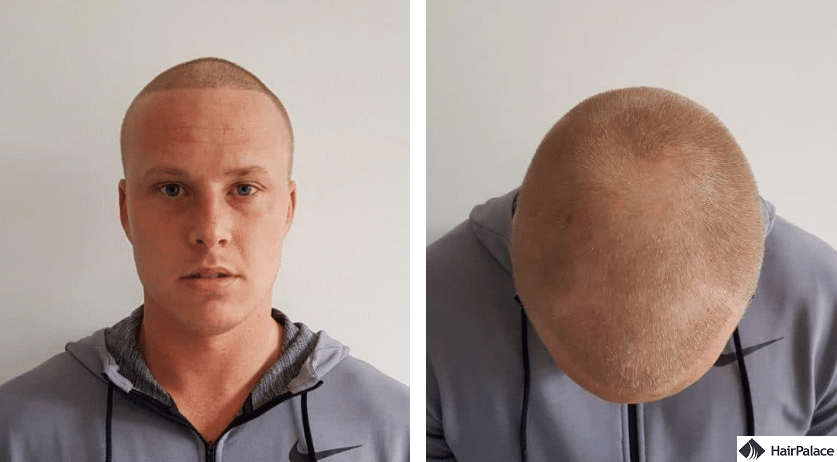
At the end of the 1st week, the surgeon inspected Stuart’s photos.
There were no signs of infection or inflammation, and the hairs were all in place, so the doctor could confirm that everything was in order.
You can already notice the formation of a normal male hairline, which will only become more pronounced over time.
2nd and 3rd week
While shampoo cannot be used, from the 2d post-op week patients must start soaking the scabs off in lukewarm tap water.
After soaking the scalp for 15 minutes or so, a gentle massage should be applied to help the scabs come off. The process is to be repeated once a day.
From the 3rd post op week, a gentle baby shampoo can be added before massaging the scalp.
The majority of the scabs disappear by the 14-15th day, and all of them should disappear by the end of the 3rd post-op week:
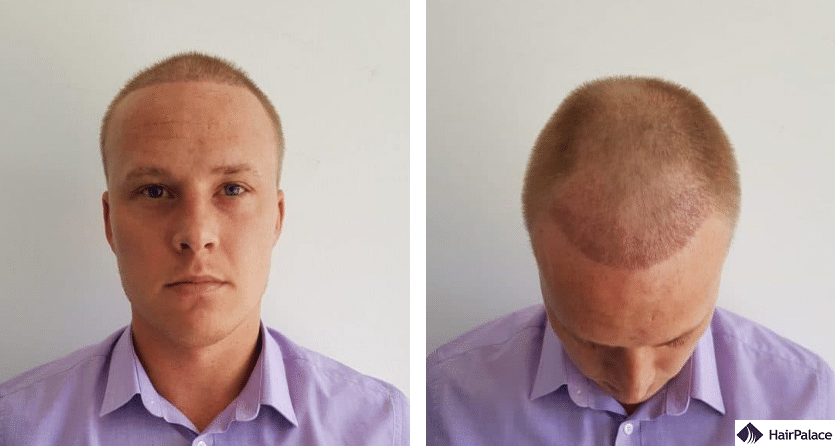
At the check-up 3 weeks after the hair transplant, the surgeon was glad to see the scabs removed.
She found the condition of the implanted area good – the redness you can see on the photos is normal in this period.
2nd and 3rd post-op month
3 weeks after the surgery the transplanted hairs start to fall out.
This is because the replacement restarts their natural life cycle.
After the strands fall out, the roots enter a resting phase. The new hair strands start to grow out after this resting period has ended.
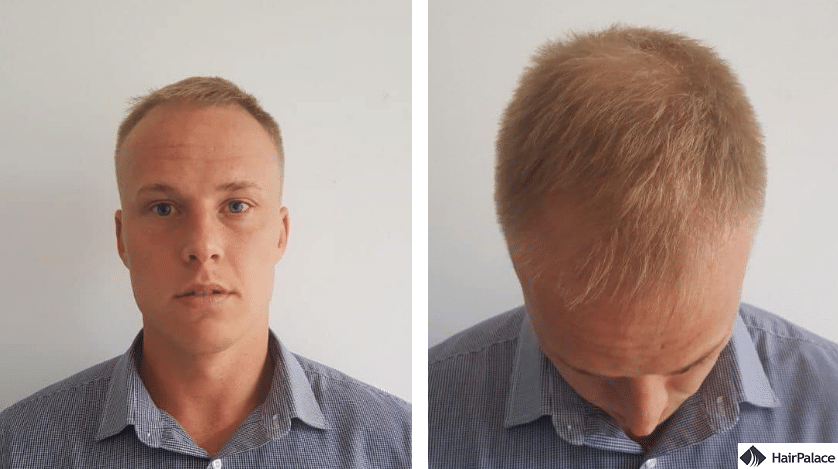
The surgeon examined Stuart’s condition 3 months after the surgery as well.
Based on the photos, everything went well. As expected, the condition at the front was almost identical to the look pre-surgery.
4-6 months after the surgery
In this period the new hair strands start growing out on the implanted area.
While it does not happen overnight, in these initial months the change can seem rapid.
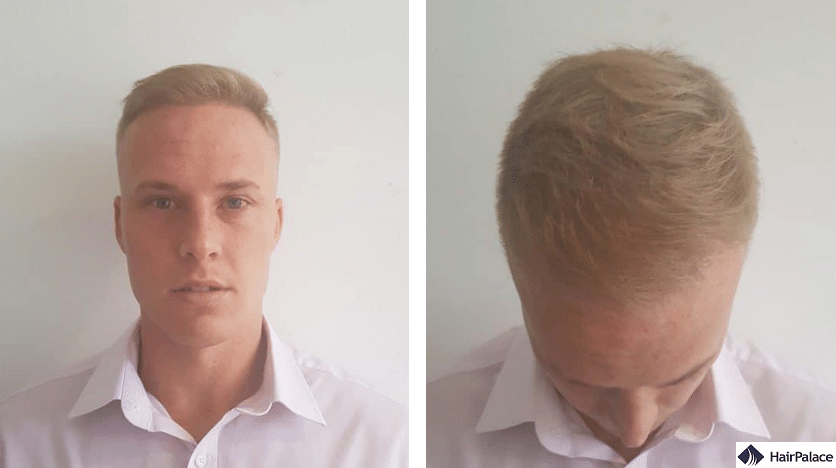
Stuart sent these photos for his 6 months check-up.
The surgeon was happy with the progress since the previous check-up. Around 60% of the transplanted hairs have grown out – sufficient to provide a visible change at the front.
6-12 months after the surgery
The remaining hairs continue to grow out up to 12-15 months after the surgery.
In these months the density increases gradually, the progress slows a bit.
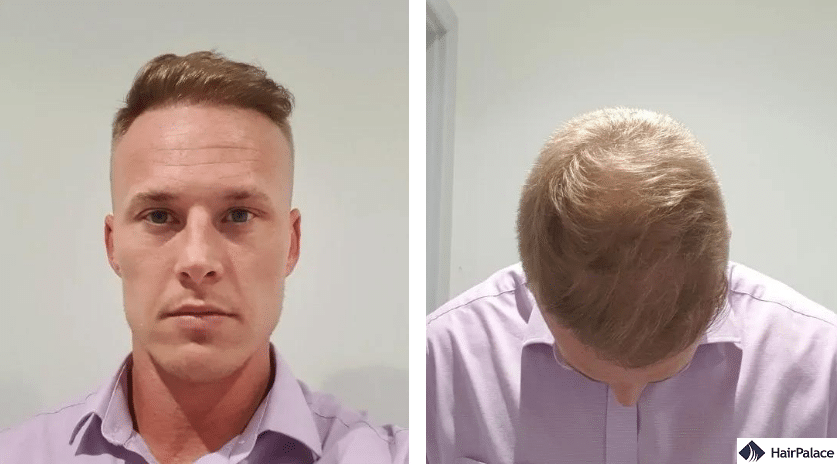
At the last check-up, the doctor was just as satisfied with the result as Stuart himself. The photos show a stronger hairline and great density at the front!

